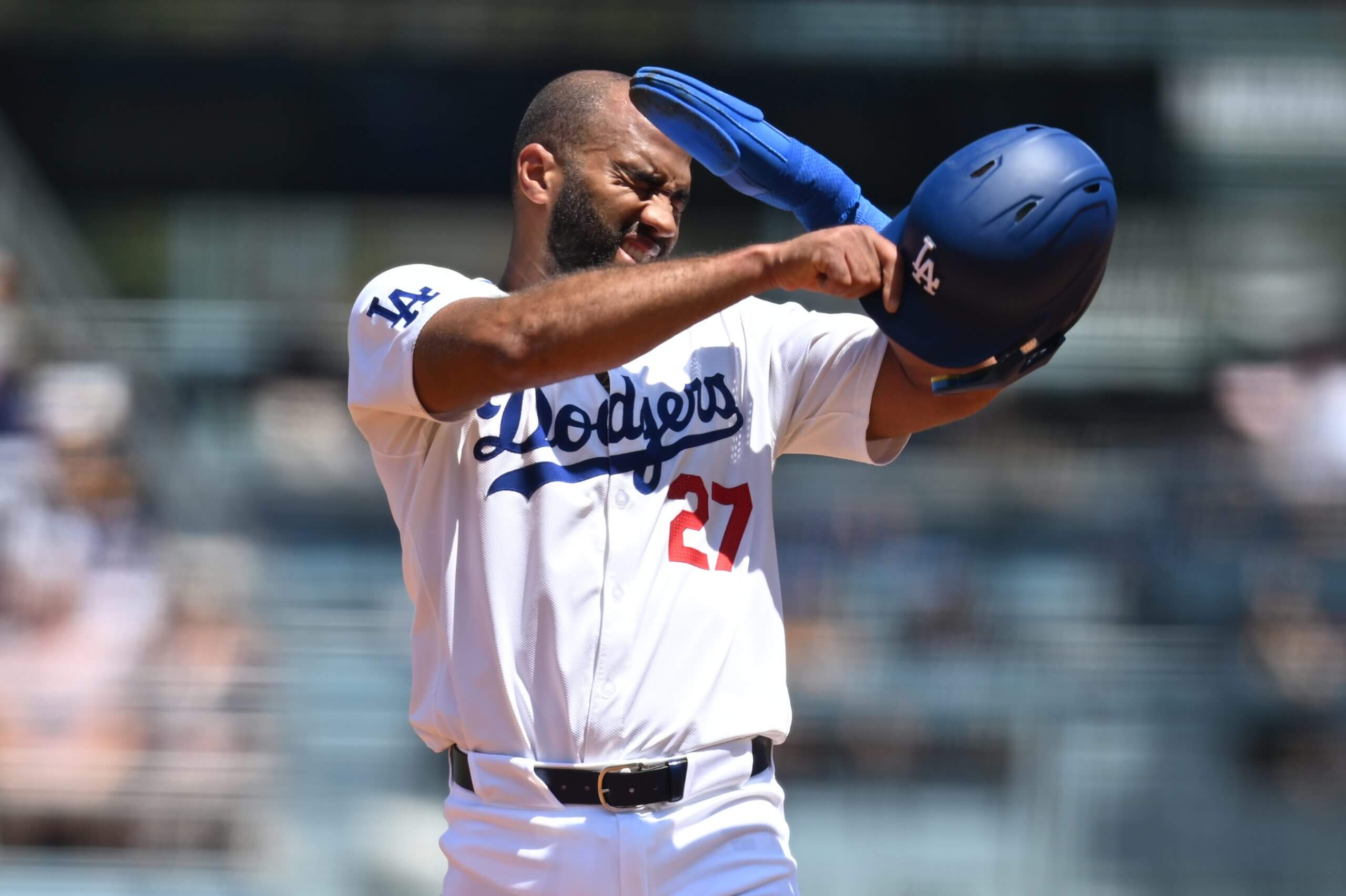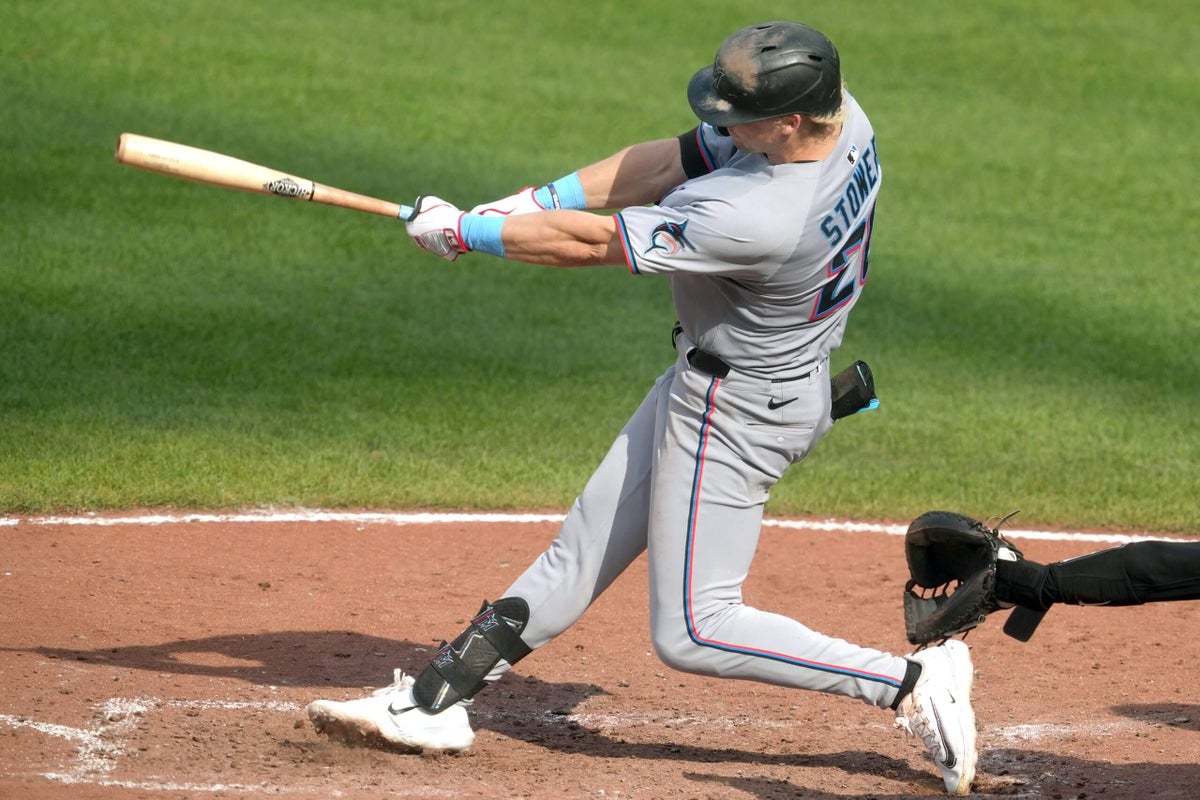By Tim Britton, Andy McCullough and Stephen J. Nesbitt
We live in an era of instant feedback. When a trade happens, readers want to know what it means. Is this player going to make a difference for a contender? Is this prospect going to be worth tracking for years to come? Here at The Athletic, we have you covered. Last summer, we offered grades on more than 40 deadline deals, and we’ll be back to do it again before this year’s deadline.
We try our best to analyze these moves. But we don’t always get them right. As any executive will tell you, it often takes years to get an accurate grade on any deal. Take the Chicago Cubs acquiring infielder Isaac Paredes last season. He did not play particularly well during his time in the Windy City, but he did help the club acquire outfielder Kyle Tucker during the winter. We couldn’t have known that last July.
Time tends to add more perspective. With that in mind, three of our graders from last summer’s feverish deadline looked back at trades we got wrong and tried to explain why.
The trade
Tampa Bay Rays get: RHP Dylan Lesko, OF Homer Bush Jr., C J.D. Gonzalez.
San Diego Padres get: RHP Jason Adam
Original grades:
Padres: B
Rays: A
Andy McCullough: More than a decade ago, the writer Sam Miller — now a co-host of The Athletic’s hit podcast The Roundtable — crystallized an era of transactional analysis with this gem:
LOVE this trade for the Rays. Who’d they give up? And who’d they get?
— Sam Miller (@SamMillerBB) January 22, 2014
We may have fallen into this trap when analyzing last year’s deal that sent reliever Jason Adam to San Diego. All three of our writers felt the Padres did well in acquiring Adam, who has been excellent and is still under team control next season. But we LOVED this trade for the Rays.
Whoops.
Tampa Bay received three players for Adam: pitcher Dylan Lesko, outfielder Homer Bush Jr. and catcher J.D. Gonzalez. Lesko headlined the group. He had torn his ulnar collateral ligament in his senior year in high school, but San Diego still chose him with the 15th pick in the 2022 draft. Upon his return, he did not pitch well. In 16 outings for Class-A Fort Wayne last season, Lesko posted a 6.46 ERA and walked 6.7 batters per nine innings. Even so, to receive a recent first-round pick in exchange for a reliever felt like a coup for the Rays, an organization that excels at manufacturing relievers.
Well, it looks like Lesko’s struggles last year were a harbinger rather than a blip. He appeared in four games for Class-A Bowling Green in April before being shut down for several months. Working as a reliever, he had lost the ability to find the plate. In his final outing for the Hot Rods, he faced eight batters, walked four and permitted three hits. He threw 30 pitches. Nine were strikes. That was on April 19. He did not appear in a game again until Tuesday, when he threw a scoreless inning for Tampa Bay’s Florida Complex League affiliate. Lesko had worked with Rays officials in the intervening months to fix his delivery.
In retrospect, I was too enamored with Lesko’s past prospect status rather than his struggles in the present. Yes, he was once considered by some to be the best amateur arm in 2022. But after two years in the San Diego organization, he wasn’t performing and the club was willing to move him. The Philadelphia Phillies, as a counter-example, kept 2021 first-round Andrew Painter off the table in trade discussions last summer, even as Painter recovered from elbow reconstruction.
Lesko is still only 21. The Rays do not need to rush him. They took the time necessary to repair his delivery. They will see if Lesko can recapture the promise he displayed before he hurt his elbow in high school. But it hasn’t been going well. It’s a good reminder that the overwhelming majority of prospects flame out.
As for the other players in the trade: Bush, 23, has been getting on base at a decent rate for Double-A Montgomery, but has not displayed much power. Gonzalez, 19, looked overmatched at the plate for Class-A Charleston before getting hurt.
If I had to do it over again, I would not give the Rays a failing grade for this trade. This is the way of the world when it comes to acquiring young talent. But suggesting Tampa Bay aced the exam, as we did last summer, now looks silly.
Revised grades:
Padres: B
Rays: C
The trade
Los Angeles Dodgers get: UTIL Amed Rosario
Tampa Bay Rays get: RHP Michael Flynn
Original grades:
Dodgers: B
Rays: C

Amed Rosario’s time with the Dodgers was brief and unmemorable. (John McCoy / Getty Images)
Tim Britton: Did I spend the final two months of last regular season regretting that I wasn’t even harsher than a C on the Guardians for deciding Lane Thomas was enough of an offensive upgrade in the outfield? Did I flip-flop entirely when Thomas hit his grand slam off Tarik Skubal to help send Cleveland to the ALCS, wondering if one swing alone turned that trade into an A+? Have I periodically checked Thomas’ ugly numbers this season to further confuse myself? Will I ultimately settle back on C being the right grade? In the words of Molly Bloom, yes I said yes I will yes.
So I have to look elsewhere. And here’s a little lesson on historical revisionism: When you want to tell people you were wrong but maintain that you still know better than them, you decide that the trade you were too positive on was one made by the team that won the World Series anyway.
But seriously, I cannot in good conscience sit here and stand by the B I gave the Dodgers for acquiring Amed Rosario when the Dodgers themselves got rid of Rosario after all of 12 plate appearances. I understand, in principle, what Los Angeles was doing. It acquired a familiar player in Rosario to bridge the gap until some of its infielders, specifically Mookie Betts, Max Muncy and Tommy Edman, returned to the lineup. But Rosario received just those 12 at-bats over a two-week stretch. He started only three games, stuck behind Kiké Hernández and Nick Ahmed on the depth chart.
There are very few concrete rules in trade analysis. We embrace nuance and context and the understanding that trade evaluations evolve. But here’s one hard-and-fast rule I live by: If you cut the guy you traded for after 12 plate appearances, you get a D.
Revised grades:
Dodgers: D
Rays: C
The trade
Orioles get: LHP Trevor Rogers
Marlins get: OF Kyle Stowers and IF Connor Norby
Original grades:
Marlins: A
Orioles: C
Stephen J. Nesbitt: While I came to regret dunking on Ryne Stanek to the Mets when he was pitching important innings last postseason, the trade grade I now see I missed on was for the trade that sent Stowers and Norby to Miami for Rogers.
In the immediate aftermath, I loved the deal for the Marlins (A) but didn’t dig it for the Orioles (C). We were all out on the O’s half of the trade. Brittany Ghiroli handed out a C+. Sam Blum gave them a D.
Rogers, a former All-Star and Rookie of the Year runner-up, had a 5.09 ERA from 2022-24. Why was this the guy who’d finally persuaded Baltimore to part with a couple prized position player prospects? Well, after pitching poorly for the Orioles late last season, Rogers is back to missing barrels and punching tickets and going deep into games.
He has rebounded from an offseason knee injury to turn in a 1.53 ERA through six starts. He’s under club control through next season, and, as we often repeat, controllable starting pitching is an incredibly costly asset. For that reason, I graded the O’s too harshly for this trade. They deserved something more like a B.
And the Marlins deserved an A+++. Oh baby!
After seeing little more than a cup of coffee with the Orioles in 2022, 2023 and 2024, Stowers has broken out with an All-Star first half with the Marlins, batting .293 and slugging 19 home runs. The Fish, looking to trade from their stash of starting pitching to improve the lineup, turned two-plus years of Rogers into two major-league-ready hitters who were blocked in Baltimore. Even if Stowers’ swing-and-miss issues increase and Norby amounts to nothing more than a fringe big leaguer, it’s a coup in return for a pitcher the Marlins were eager to move.
Revised grades:
Marlins: A+++
Orioles: B
(Top photo of Stowers: Mitchell Layton / Getty Images)
